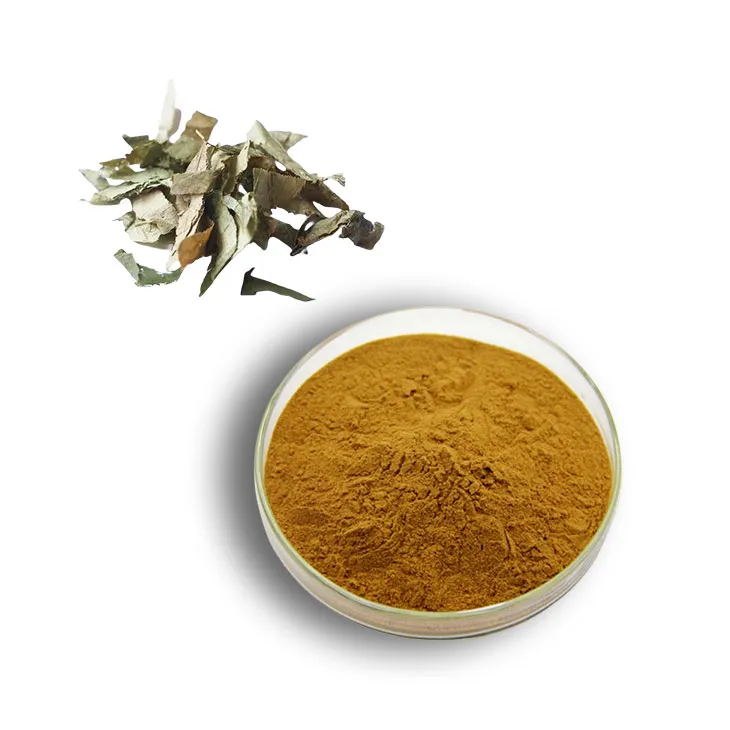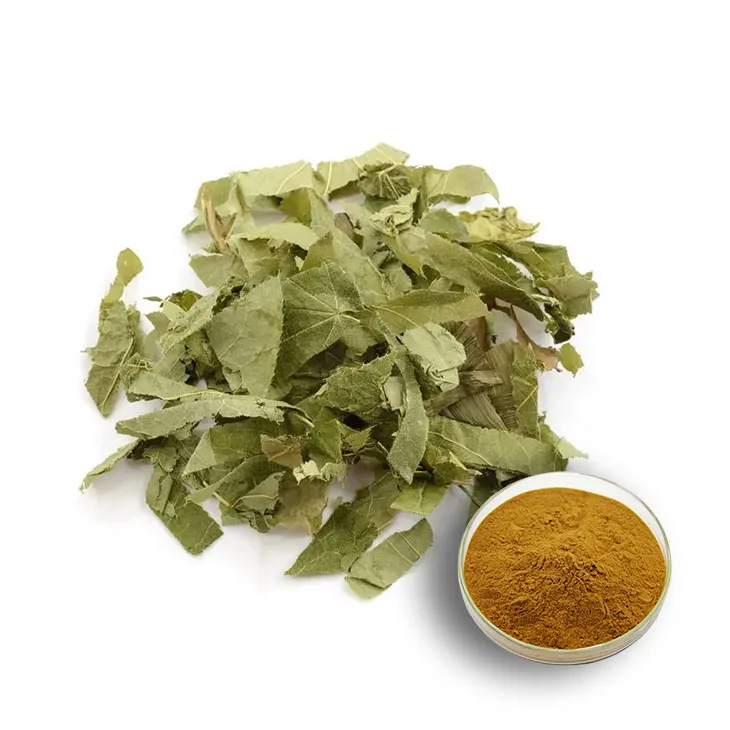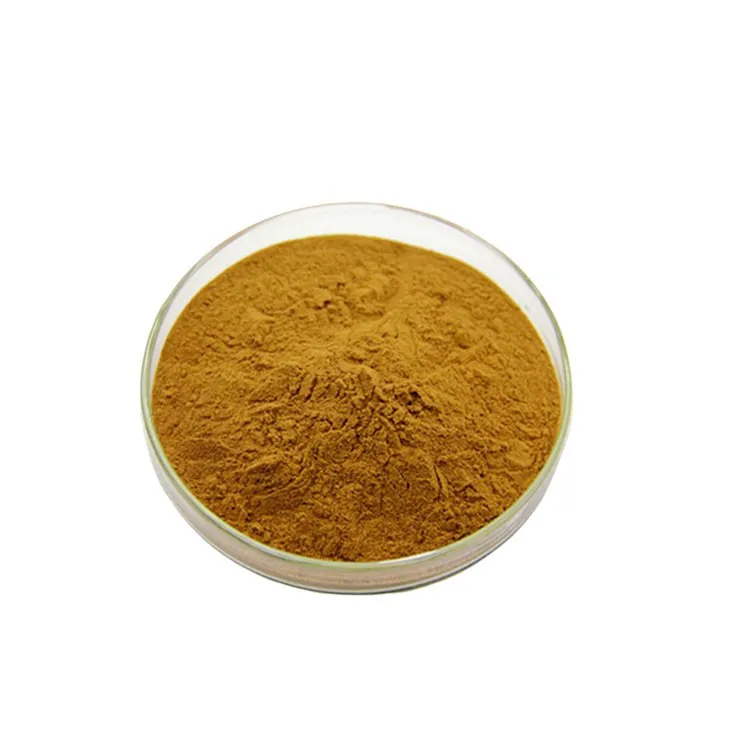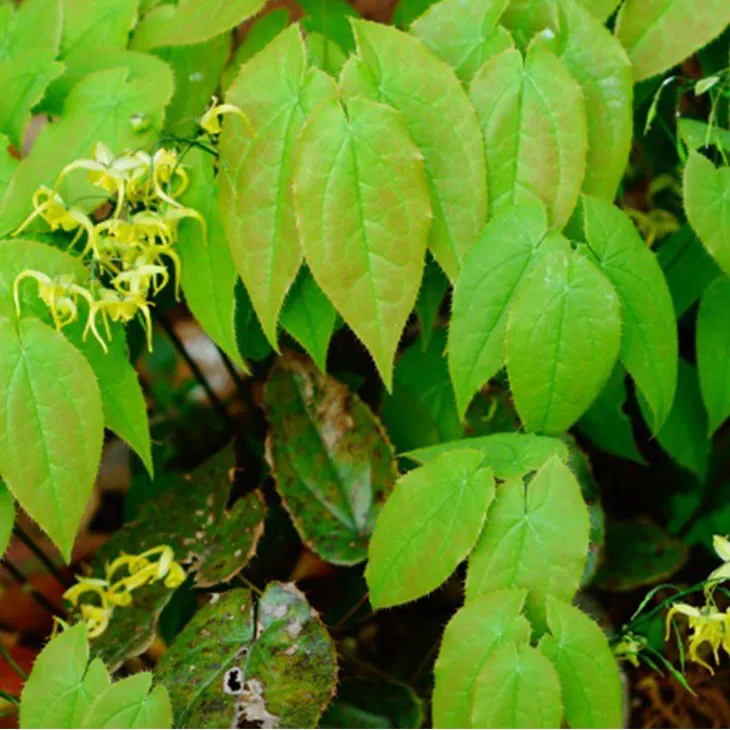- 0086-571-85302990
- sales@greenskybio.com
The Optimal Method for Extracting Epimedium Extract Powder.
2024-11-27

1. Introduction
Epimedium, a traditional Chinese medicinal herb, has been widely used for its various pharmacological properties. Epimedium extract powder is of great value in the fields of medicine, health products, and cosmetics. The extraction process plays a crucial role in obtaining high - quality extract powder. This article aims to explore the optimal method for extracting Epimedium extract powder by comprehensively considering different aspects such as raw material quality, pre - treatment methods, and extraction parameters.

2. Raw Material Quality
The quality of Epimedium raw materials significantly influences the final extract powder.
2.1. Species Variation
There are multiple species of Epimedium, and different species may contain different active ingredients and their contents. For example, Epimedium brevicornu and Epimedium sagittatum are commonly used species. Studies have shown that the chemical composition and pharmacological effects can vary among species. When selecting raw materials, it is necessary to clearly identify the species to ensure the desired therapeutic effects in the extract powder.
2.2. Growth Environment
The growth environment of Epimedium, including soil type, altitude, and climate, also affects its quality. Epimedium grown in rich - soil, appropriate - altitude, and stable - climate regions may have higher content of active ingredients. For instance, high - altitude areas with sufficient sunlight and clean air may promote the synthesis of flavonoids in Epimedium. Therefore, raw materials from favorable growth environments are preferred for extraction.
2.3. Harvest Time
The harvest time of Epimedium is crucial. Different growth stages of Epimedium contain different levels of active ingredients. Generally, Epimedium is usually harvested at a certain period when the content of active ingredients reaches its peak. For example, in some cases, it is better to harvest Epimedium in the flowering period. Harvesting at the wrong time may lead to lower quality raw materials and, consequently, less effective extract powder.

3. Pre - treatment Methods
Proper pre - treatment of Epimedium raw materials is essential before extraction.
3.1. Cleaning
The first step in pre - treatment is cleaning. Epimedium should be thoroughly cleaned to remove dirt, sand, and other impurities. This can be done by gently washing the plant materials in clean water multiple times. Improper cleaning may introduce contaminants into the extraction process, which can affect the purity and quality of the extract powder.
3.2. Drying
After cleaning, drying is necessary. There are different drying methods, such as natural drying and artificial drying. Natural drying is a traditional method, which allows Epimedium to dry slowly under natural sunlight and ventilation. However, it may be affected by weather conditions. Artificial drying, such as using a drying oven, can control the drying temperature and humidity more precisely. The drying temperature should be carefully selected to avoid over - drying or under - drying. Over - drying may cause the loss of some active ingredients, while under - drying may lead to mold growth during storage.
3.3. Crushing
Crushing the dried Epimedium into an appropriate particle size is also an important pre - treatment step. Finer particles can increase the contact area between the raw materials and the extraction solvent, which is beneficial for the extraction process. However, if the particles are too fine, it may cause problems such as clogging during extraction. The appropriate particle size usually ranges from 20 to 80 mesh.

4. Extraction Methods
There are several extraction methods for Epimedium extract powder, each with its own characteristics.
4.1. Solvent Extraction
- Principle: Solvent extraction is based on the solubility of active ingredients in different solvents. Commonly used solvents include ethanol, water, and ethyl acetate.
- Ethanol Extraction: Ethanol is a widely used solvent for Epimedium extraction. It can dissolve a large number of flavonoids and other active ingredients. The extraction process usually involves soaking the crushed Epimedium in a certain concentration of ethanol solution (e.g., 50% - 90% ethanol) for a certain period, usually several hours to days. Then, the mixture is filtered to obtain the ethanol extract. The advantages of ethanol extraction are its relatively high extraction efficiency and good solubility for many active ingredients. However, ethanol is flammable, which requires strict safety measures during the extraction process.
- Water Extraction: Water extraction is a more environmentally friendly method. Epimedium is soaked in water at a certain temperature (usually around 60 - 90°C) for a period. The water extract contains water - soluble active ingredients such as polysaccharides. However, water extraction may also extract some impurities simultaneously, and the extraction efficiency for some lipophilic active ingredients may be relatively low.
- Ethyl Acetate Extraction: Ethyl acetate is mainly used for extracting lipophilic active ingredients in Epimedium. It has a certain selectivity for some specific compounds. However, ethyl acetate is volatile and has a certain toxicity, so proper ventilation and safety precautions are required during extraction.
4.2. Supercritical Fluid Extraction
- Principle: Supercritical fluid extraction uses supercritical fluids, such as supercritical CO₂. Supercritical CO₂ has properties between liquid and gas, with high diffusivity and low viscosity. It can penetrate into the matrix of Epimedium and selectively extract active ingredients.
- Advantages: This method has several advantages. Firstly, it is a green extraction method as CO₂ is non - toxic, non - flammable, and easily recyclable. Secondly, it can achieve high - purity extraction with relatively less impurity extraction. Thirdly, the extraction process can be precisely controlled by adjusting parameters such as pressure and temperature.
- Disadvantages: However, the equipment for supercritical fluid extraction is relatively expensive, which requires a higher initial investment. And the operation process also requires professional technical personnel.
4.3. Ultrasonic - Assisted Extraction
- Principle: Ultrasonic - assisted extraction utilizes ultrasonic waves to generate cavitation effects in the extraction solvent. The cavitation bubbles collapse and generate high - pressure and high - temperature micro - environments, which can disrupt the cell walls of Epimedium and promote the release of active ingredients into the solvent.
- Benefits: This method can significantly shorten the extraction time compared to traditional solvent extraction methods. It also has the potential to increase the extraction yield of active ingredients. Moreover, it can be combined with other extraction methods, such as ultrasonic - assisted solvent extraction.
- Limitations: However, the ultrasonic intensity and treatment time need to be carefully optimized. Excessive ultrasonic intensity or too long treatment time may cause the degradation of some active ingredients.

5. Extraction Parameters
The extraction parameters play a vital role in determining the quality and yield of Epimedium extract powder.
5.1. Temperature
For solvent extraction methods, the extraction temperature has a significant impact. For example, in ethanol extraction, an appropriate temperature range (usually 40 - 80°C) can increase the solubility of active ingredients and the extraction efficiency. However, if the temperature is too high, it may cause the degradation of some thermally unstable active ingredients. In water extraction, the temperature also affects the solubility of polysaccharides and other components. For supercritical fluid extraction, temperature is one of the key parameters for controlling the supercritical state of the fluid and the extraction selectivity.
5.2. Time
The extraction time is another important parameter. In general, with the increase of extraction time, the extraction yield of active ingredients will increase initially. However, after reaching a certain time, the extraction yield may not increase significantly or may even decrease due to the extraction of impurities or the degradation of active ingredients. For example, in solvent extraction, a typical extraction time may range from 2 to 24 hours depending on the raw material and solvent used. In ultrasonic - assisted extraction, the treatment time is usually shorter, typically within 30 minutes to 2 hours.
5.3. Solvent - to - Material Ratio
The ratio of solvent to raw material also affects the extraction. A higher solvent - to - material ratio generally can increase the extraction efficiency as it provides more solvent for dissolving the active ingredients. However, too high a ratio may also increase the cost of extraction and the amount of solvent to be removed in the subsequent purification process. For example, in ethanol extraction, a common solvent - to - material ratio may be 5:1 to 15:1 (volume/weight).
6. Purification and Concentration
After extraction, the obtained extract usually needs to be purified and concentrated to obtain high - quality Epimedium extract powder.
6.1. Filtration
The first step in purification is filtration. Filtration can remove large particles, undissolved substances, and some impurities from the extract. There are different types of filtration methods, such as vacuum filtration and membrane filtration. Vacuum filtration is suitable for removing larger particles, while membrane filtration can achieve finer purification by using membranes with different pore sizes.
6.2. Evaporation and Concentration
After filtration, the extract needs to be concentrated. Evaporation is a common method for concentration. The extract can be heated under reduced pressure or normal pressure to evaporate the solvent, thereby increasing the concentration of active ingredients. However, during evaporation, care should be taken to control the temperature and pressure to avoid the degradation of active ingredients.
6.3. Drying to Powder
Finally, the concentrated extract is dried to powder. There are various drying methods, such as spray drying and freeze - drying. Spray drying can quickly convert the liquid extract into powder, which is suitable for large - scale production. Freeze - drying can better preserve the activity of active ingredients, but the cost is relatively high.
7. Conclusion
In conclusion, the optimal method for extracting Epimedium extract powder involves a comprehensive consideration of multiple factors. Firstly, high - quality raw materials should be selected based on species, growth environment, and harvest time. Secondly, proper pre - treatment methods including cleaning, drying, and crushing should be carried out. Thirdly, an appropriate extraction method such as solvent extraction, supercritical fluid extraction, or ultrasonic - assisted extraction should be chosen according to the specific requirements and conditions, and the extraction parameters such as temperature, time, and solvent - to - material ratio should be optimized. Finally, effective purification and concentration steps are required to obtain high - quality Epimedium extract powder. By following these guidelines, it is possible to produce Epimedium extract powder with high purity, high yield, and good pharmacological properties.
FAQ:
Q1: What are the main factors affecting the quality of Epimedium extract powder?
The main factors include the quality of raw materials, pre - treatment methods, and extraction parameters. High - quality raw materials are the foundation. Different pre - treatment methods such as drying and crushing can impact the extraction efficiency. And extraction parameters like extraction solvent, temperature, time, and pressure also play crucial roles in determining the quality of the final extract powder.
Q2: How does the quality of raw materials influence the extraction of Epimedium extract powder?
The quality of raw materials is of great significance. High - quality Epimedium contains more active ingredients. If the raw materials are of poor quality, they may have a lower content of the desired components, which can lead to a lower - quality extract powder. Also, factors like the origin, growth environment, and harvesting time of the raw materials can affect their quality and thus the extraction result.
Q3: What are the common pre - treatment methods for Epimedium before extraction?
Common pre - treatment methods include drying to reduce moisture content, which helps in preservation and extraction. Crushing or grinding the Epimedium into smaller particles can increase the surface area, facilitating better contact with the extraction solvent during extraction. Washing to remove impurities is also an important pre - treatment step.
Q4: How to determine the optimal extraction parameters for Epimedium extract powder?
To determine the optimal extraction parameters, one needs to conduct a series of experiments. Firstly, different extraction solvents can be tested to find the most suitable one that can effectively dissolve the active ingredients. Then, vary the extraction temperature, time, and pressure within a reasonable range. Analyze the yield and quality of the extract powder obtained under different parameter combinations. The combination that results in the highest yield and best quality of the active ingredients is considered the optimal extraction parameters.
Q5: What are the different extraction methods for Epimedium extract powder?
Common extraction methods include solvent extraction, which uses solvents like ethanol or water - ethanol mixtures to extract the active ingredients. Supercritical fluid extraction is also a method, where supercritical fluids such as supercritical CO2 can be used. Maceration, a traditional method that involves soaking the Epimedium in a solvent for a long time, is also used in some cases.
Related literature
- Study on the Optimization of Extraction Technology of Epimedium Extract"
- "The Influence of Raw Material Quality on Epimedium Extract Powder Extraction"
- "Comparative Analysis of Different Extraction Methods for Epimedium Extract"
- ▶ Hesperidin
- ▶ Citrus Bioflavonoids
- ▶ Plant Extract
- ▶ lycopene
- ▶ Diosmin
- ▶ Grape seed extract
- ▶ Sea buckthorn Juice Powder
- ▶ Fruit Juice Powder
- ▶ Hops Extract
- ▶ Artichoke Extract
- ▶ Mushroom extract
- ▶ Astaxanthin
- ▶ Green Tea Extract
- ▶ Curcumin
- ▶ Horse Chestnut Extract
- ▶ Other Product
- ▶ Boswellia Serrata Extract
- ▶ Resveratrol
- ▶ Marigold Extract
- ▶ Grape Leaf Extract
- ▶ New Product
- ▶ Aminolevulinic acid
- ▶ Cranberry Extract
- ▶ Red Yeast Rice
- ▶ Red Wine Extract
-
Sugarcane Extract
2024-11-27
-
White Willow Bark Extract
2024-11-27
-
Peppermint Extract Powder
2024-11-27
-
Dan Shen Root Extract/Salvia Root Extract
2024-11-27
-
Resveratrol extract
2024-11-27
-
Horse Chestnut Extract
2024-11-27
-
Okra Extract
2024-11-27
-
Plantain extract
2024-11-27
-
Mangosteen extract powder
2024-11-27
-
Rose Hip Extract
2024-11-27





















